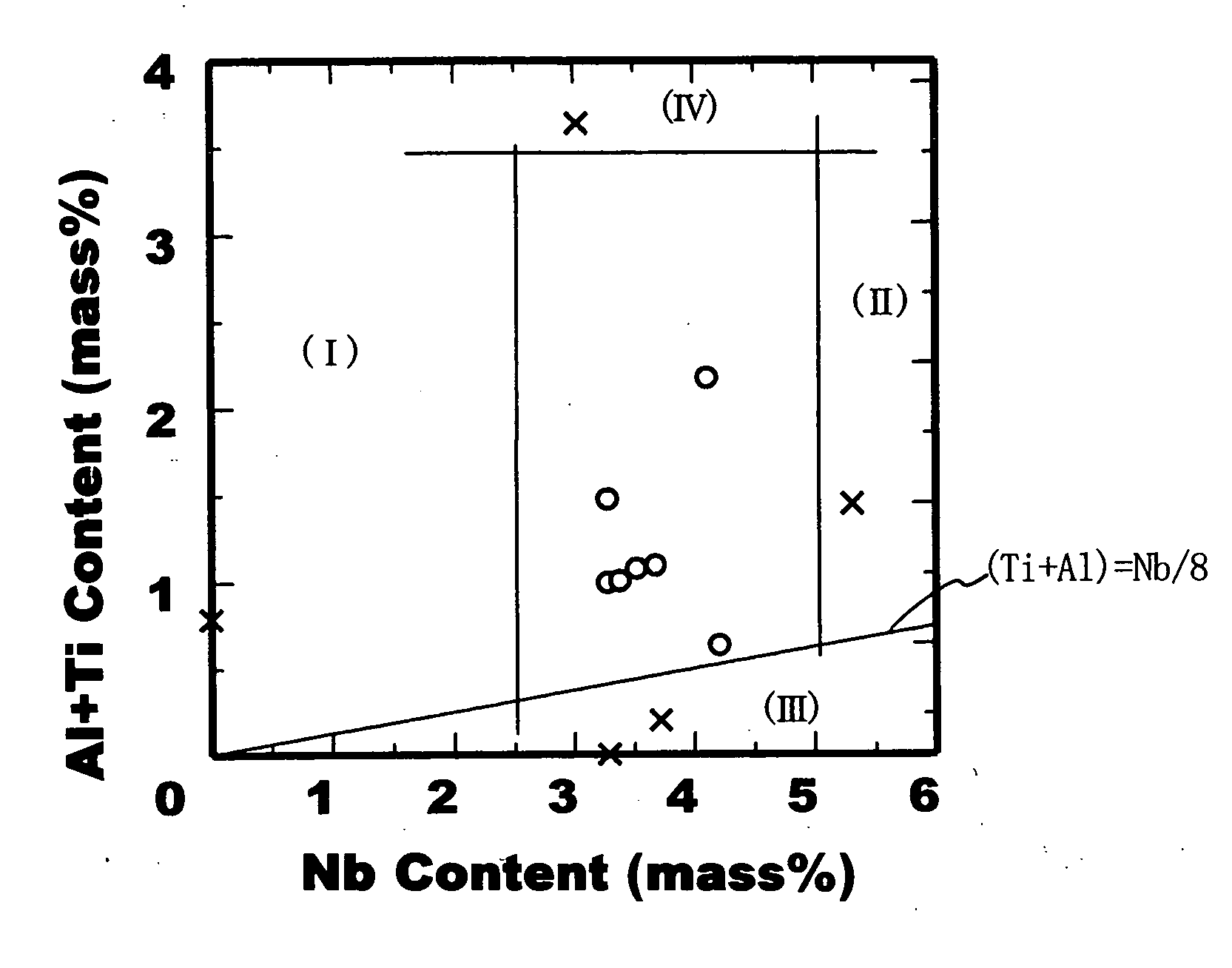Welded joint made of an austenitic steel
a technology of austenitic steel and welded joints, which is applied in the field of components, can solve the problems of high susceptibility to weld hot cracking, decrease in strength of welds, and difficulty in obtaining high strength, and achieves the effects of reducing high strength, and improving toughness and resistance to hydrogen embrittlemen
- Summary
- Abstract
- Description
- Claims
- Application Information
AI Technical Summary
Benefits of technology
Problems solved by technology
Method used
Image
Examples
Embodiment Construction
[0071] 50 kg of each of the base metals having the chemical compositions indicated by symbols M1-M4 in Table 1 were melted in a vacuum high frequency furnace, and then they underwent forging to obtain plates with a thickness of 25 mm. They were then subjected to heat treatment by holding for 1 hour at 1000° C. and water cooled to obtain test materials of a weld base metal.
[0072] 50 kg of each of the alloys having the chemical compositions indicated by symbols W1-W5 and Y1-Y5 shown in Table 1 were melted in a vacuum high frequency furnace and worked to form wire with an outer diameter of 2 mm to be used as a welding material.
[0073] In order to evaluate the properties of welds, welded joints were prepared using the above-described weld base metals and welding materials under the below-described conditions, and tests evaluating the properties of the weld metals were carried out.
[0074] A plate measuring 25 mm thick, 100 mm wide, and 200 mm long with a 20° V-shaped bevel in one side o...
PUM
| Property | Measurement | Unit |
|---|---|---|
| pressure | aaaaa | aaaaa |
| tensile strength | aaaaa | aaaaa |
| temperature toughness | aaaaa | aaaaa |
Abstract
Description
Claims
Application Information
 Login to View More
Login to View More - R&D
- Intellectual Property
- Life Sciences
- Materials
- Tech Scout
- Unparalleled Data Quality
- Higher Quality Content
- 60% Fewer Hallucinations
Browse by: Latest US Patents, China's latest patents, Technical Efficacy Thesaurus, Application Domain, Technology Topic, Popular Technical Reports.
© 2025 PatSnap. All rights reserved.Legal|Privacy policy|Modern Slavery Act Transparency Statement|Sitemap|About US| Contact US: help@patsnap.com


